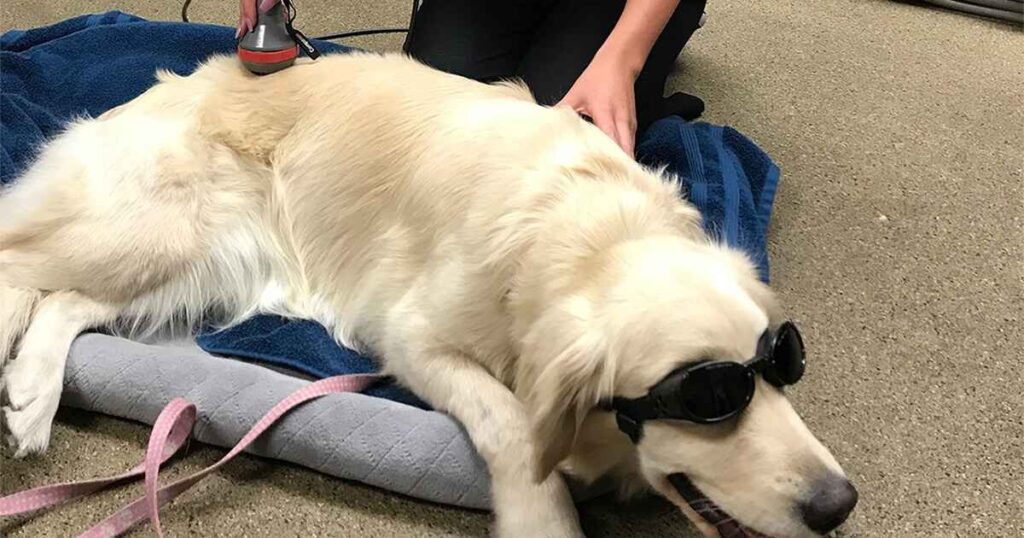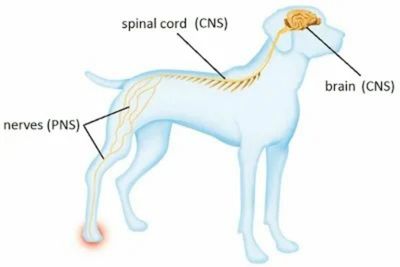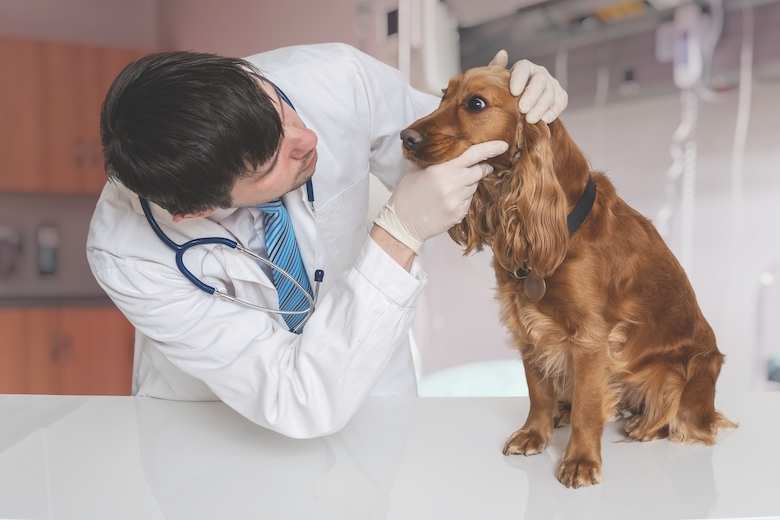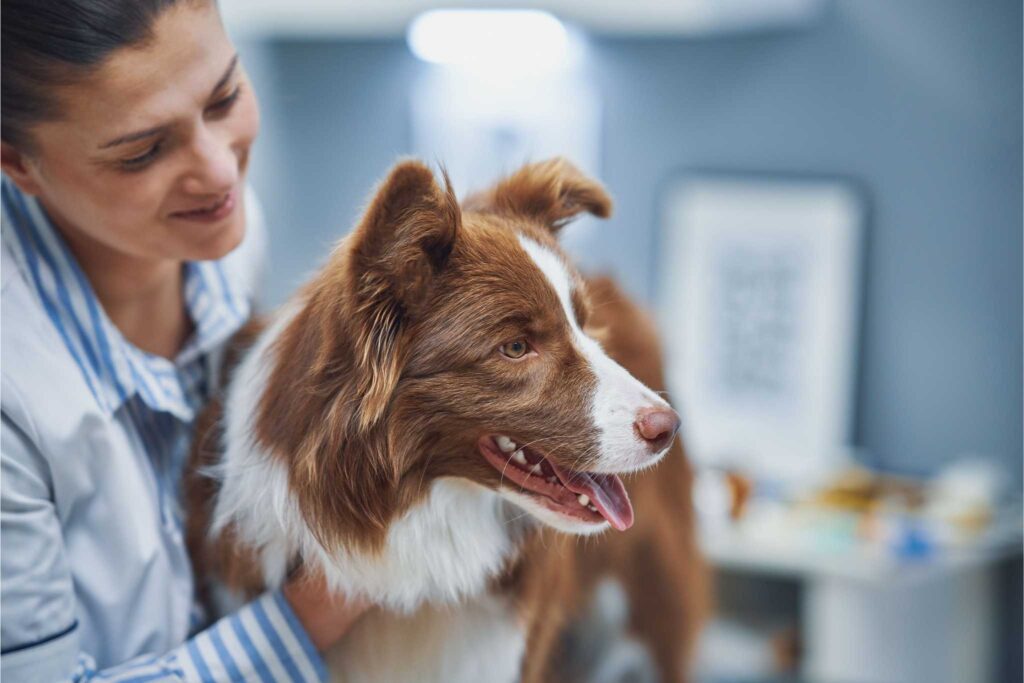Why Your Dog Arches His Back Like a Cat? 7 reasons: 1. Stretching 2. Pain 3. Fear 4. Play 5. Instinct 6. Stress 7. Spinal issues.
Why Your Dog Arches His Back Like a Cat?
Have you ever wondered why your dog arches his back like a cat? Sometimes it’s nothing to worry about, but other times it’s a sign that your dog is in pain.
Dogs may arch after a nap, during play, or when stretching — all of which are normal. But the same posture can also mean problems like stomach pain, spine issues, or anal sac trouble.
This guide will outline the 7 main reasons dogs arch their back, how veterinarians diagnose the cause, available treatment options, and the red flags you should never ignore.
7 Reasons Dogs Arch Their Back
| Cause | What You’ll See | How Serious |
|---|---|---|
| Normal Stretching | After sleep or play, relaxed dog | Normal |
| Stomach Pain / Bloat | Drooling, swollen belly, restless | Emergency |
| Anal Sac Issues | Stiffness, weak legs, can’t move well | Needs vet care |
| Spinal Problems (IVDD) | After sleep or play, a relaxed dog | Emergency |
| Muscle Strain | After jumping or running | Mild |
| Nervous System Problems | Wobbling, seizures, balance loss | Emergency |
| Organ Pain (kidney, pancreas) | Vomiting, no appetite, tired | Needs vet care |
![A Golden Retriever performs a play bow stretch on bright green grass outdoors, with its front paws down and its rear end up. [Why Your Dog Arches His Back Like a Cat?]](https://catscare.blog/wp-content/uploads/2025/10/why-your-dog-arches-his-back-like-a-cat-1-1024x574.jpg)
1. Normal Stretching
The most common reason for dogs arching their back is simple stretching. After waking up, during play, or before running, dogs often stretch their spine. This pose sometimes looks like the “cat stretch” or “play bow.”
If the stretching is short, relaxed, and followed by normal movement, it’s nothing to worry about.
2. Stomach Pain or Bloat
Another reason is belly pain. Gas, indigestion, or even life-threatening bloat (GDV) can make your dog arch and hunch.
Warning signs of bloat:
![A Golden Retriever dog lies on a rug indoors as a person pets its back. An overlaid graphic in the corner warns about signs of bloat with an illustration of a stomach. [Why Your Dog Arches His Back Like a Cat?]](https://catscare.blog/wp-content/uploads/2025/10/Dog-golden-retriever-bloat-warning-1024x574.jpg)
- Swollen or hard belly
- Drooling a lot
- Pacing and restlessness
- Trying to vomit, but nothing comes out
Bloat is an emergency. If you see these signs, rush to the vet immediately.
3. Anal Sac Issues
Dogs have two small glands near the anus. If they get blocked or infected, your dog may arch his back to ease the discomfort.
Other symptoms include:
- Scooting across the floor
- Licking or biting the rear
- Bad smell from the glands

Treatment usually involves manual cleaning, antibiotics, or sometimes minor surgery.
4. Spinal Problems (IVDD)
One of the most serious causes is intervertebral disc disease (IVDD) or other spine problems.
Look for these signs:

- Pain when moving
- Weak or wobbly back legs
- Trembling or crying
- In severe cases, paralysis
Vets may use X-rays, CT scans, or MRI to confirm. Treatment may include rest, medications, or surgery. If your dog suddenly can’t walk, it’s an emergency.
5. Muscle Strain
Just like humans, dogs can pull a muscle while running, playing, or jumping. They may arch their back for a short time to protect the sore spot.
In most cases, rest and gentle care help. If the pain persists for more than a few days, consult your veterinarian for further evaluation.
6. Nervous System Problems
Sometimes the issue is not the muscles or the stomach, but the nervous system. Conditions such as meningitis, brain tumours, or nerve pressure can affect posture.
Other signs include:
- Seizures
- Wobbling
- Head tilt
- Sudden weakness

These are medical emergencies. Immediate vet care is needed.
7. Organ Pain (Kidneys, Pancreas, etc.)
Internal organ problems may also cause a hunched back. Common culprits include:
- Kidney infections
- Pancreatitis
- Bladder stones
Other symptoms:
- Vomiting
- No appetite
- Drinking or peeing more than usual
- Tiredness
Vets may run blood tests, urine tests, and ultrasounds to find the problem.
How Vets Find the Cause
When you visit the vet, they may use:

- Physical exam (checking belly, spine, muscles)
- Neurological exam (reflexes, balance)
- X-rays, CT, or MRI (discs, bones)
- Ultrasound (organs)
- Blood and urine tests (kidneys, pancreas, liver)
- Anal sac exam (for blockages or infection)
This step-by-step testing helps find the exact reason behind the arching.
Treatment & First Aid
The treatment depends on the cause:
- Muscle strain → Rest + anti-inflammatory medicines
- Anal sac issues → Cleaning, antibiotics, or surgery
- Stomach pain/bloat → Diet change, fluids, or emergency surgery
- IVDD → Rest, pain medicine, or spinal surgery
- Organ pain → Hospital care, IV fluids, special diet
At home: Keep your dog calm by avoiding activities that cause them to jump or run, and never give them human medicine unless your veterinarian has prescribed it.
When to Rush to the Vet
Take your dog to the vet immediately if you notice:
- Sudden collapse or can’t walk
- Crying loudly in pain
- Swollen belly
- Drooling and constant retching
- Sudden paralysis

These are life-threatening emergencies.
Prevention Tips
You can’t prevent all problems, but you can lower risks:
Keep your dog at a healthy weight
Use ramps instead of letting them jump from heights
Give gentle daily exercise
Schedule regular vet checkups
Pay attention to posture changes
FAQs
Q1: Is it normal if my dog arches his back like a cat?
Yes, if it happens during stretching or play, and your dog looks relaxed.
Q2: When should I worry?
If arching is accompanied by pain, crying, or other symptoms, it’s time to see a veterinarian.
Q3: Can stomach problems cause arching?
Yes, gas, tummy pain, or bloating can cause dogs to hunch their backs.
Q4: What if my dog also has weak back legs?
This could mean spinal disease (IVDD). Get emergency vet care.
Q5: How can I keep my dog’s back healthy?
Keep them fit, avoid high jumps, and go for regular checkups.

Hi, I’m Sana Sajid!I’m the voice behind CatsCare.blog, sharing my 10+ years of hands-on cat care experience. With a diploma in animal care, I offer practical tips, trusted advice, and easy-to-follow guides to help keep your cats healthy and happy.
When I’m not writing, I spend time with my own cats or exploring the latest developments in feline health. Follow CatsCare.blog for expert insights and real cat stories!

![A realistic photo of a dog arching its back like a cat while stretching outdoors on green grass, captured in natural daylight. [Why Your Dog Arches His Back Like a Cat?]](https://catscare.blog/wp-content/uploads/2025/10/Why-Your-Dog-Arches-His-Back-Like-a-Cat.jpg)
![A white and brown dog gently licks the ear of a sitting brown tabby cat in a close-up indoor shot. [Why Your Dog Grooms Your Cat?]](https://catscare.blog/wp-content/uploads/2025/09/Why-Your-Dog-Grooms-Your-Cat.jpg)


![A medium-sized dog with a black, brown, and white coat is leaning over a tabby cat that is lying on its back on a beige carpet. The dog has its mouth slightly open and is looking directly at the camera. The cat is looking slightly to the side with wide eyes. They are both on a carpeted floor indoors, with a blurry background showing furniture. [Why Does My Dog Hump My Cat?]](https://catscare.blog/wp-content/uploads/2025/09/Why-Does-My-Dog-Hump-My-Cat.jpg)